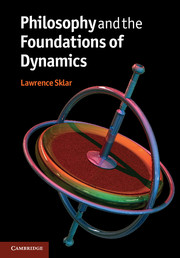Book contents
- Frontmatter
- Contents
- Chapter 1 Introduction
- Chapter 2 The pre-history of classical dynamics
- Chapter 3 The astronomical revolution
- Chapter 4 Precursors to Newtonian dynamics
- Chapter 5 The Newtonian synthesis
- Chapter 6 Philosophical aspects of the Newtonian synthesis
- Chapter 7 The history of statics
- Chapter 8 The development of dynamics after Newton
- Chapter 9 The “Newtonian” approach after Newton
- Chapter 10 From virtual work to Lagrange's equation
- Chapter 11 Extremal principles
- Chapter 12 Some philosophical reflections on explanation and theory
- Chapter 13 Conservation principles
- Chapter 14 Hamilton's equations
- Chapter 15 Canonical transformations, optical analogies and algebraic structures
- Chapter 16 The search for new foundations
- Chapter 17 New directions in the applications of dynamics
- Chapter 18 Spacetime formulations of Newtonian dynamics
- Chapter 19 Formalization: mass and force
- Chapter 20 Relationist dynamics
- Chapter 21 Modes of explanation
- Chapter 22 Retrospective and conclusions
- References
- Index
Chapter 15 - Canonical transformations, optical analogies and algebraic structures
Published online by Cambridge University Press: 05 December 2012
- Frontmatter
- Contents
- Chapter 1 Introduction
- Chapter 2 The pre-history of classical dynamics
- Chapter 3 The astronomical revolution
- Chapter 4 Precursors to Newtonian dynamics
- Chapter 5 The Newtonian synthesis
- Chapter 6 Philosophical aspects of the Newtonian synthesis
- Chapter 7 The history of statics
- Chapter 8 The development of dynamics after Newton
- Chapter 9 The “Newtonian” approach after Newton
- Chapter 10 From virtual work to Lagrange's equation
- Chapter 11 Extremal principles
- Chapter 12 Some philosophical reflections on explanation and theory
- Chapter 13 Conservation principles
- Chapter 14 Hamilton's equations
- Chapter 15 Canonical transformations, optical analogies and algebraic structures
- Chapter 16 The search for new foundations
- Chapter 17 New directions in the applications of dynamics
- Chapter 18 Spacetime formulations of Newtonian dynamics
- Chapter 19 Formalization: mass and force
- Chapter 20 Relationist dynamics
- Chapter 21 Modes of explanation
- Chapter 22 Retrospective and conclusions
- References
- Index
Summary
In this chapter we will explore three more stages in the nineteenth-century development of dynamics. One program was not itself directed at finding new foundational posits for the theory. Its initial purpose, rather, was to supply a method to facilitate the solving of dynamical problems, especially when they were framed in the mode of the Hamiltonian dynamical equations. We need to pursue it a bit, however, since it provides some of the resources needed to understand the second program treated in this chapter.
This second program is Hamilton–Jacobi theory. Here, starting from Hamilton's work in optics, rather than in dynamics, the result was the development of new possible foundational equations for dynamics to supplement those already known. Just as in the case of the development of the Hamilton dynamical equations, there was no claim here that the results went beyond the existing foundational posits in any fundamental way. It was universally accepted that the existing foundational methods were correct and complete as they stood. Rather, a new “reformulation” of the existing foundations was what was on offer.
- Type
- Chapter
- Information
- Philosophy and the Foundations of Dynamics , pp. 137 - 143Publisher: Cambridge University PressPrint publication year: 2012



